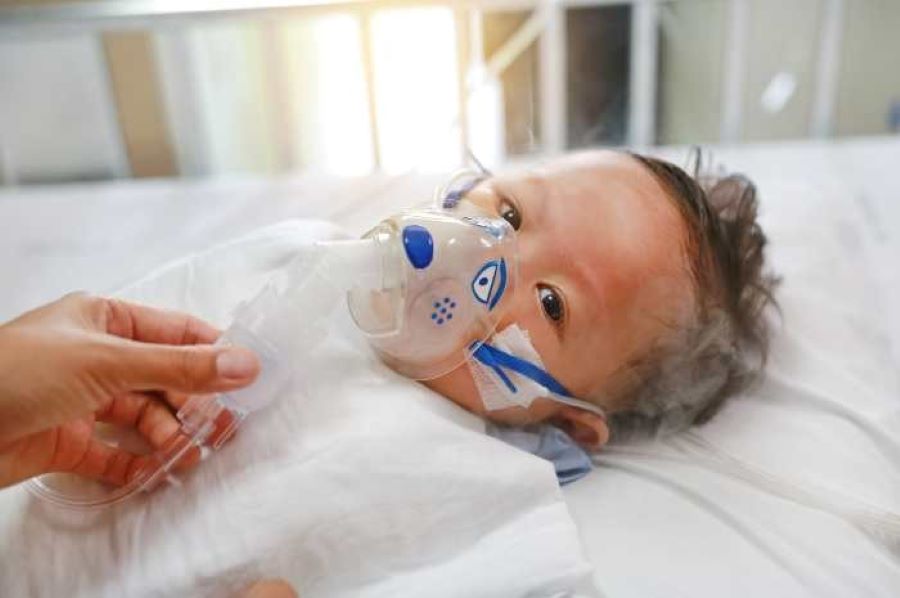
Bronchiolitis in paediatric age: the Respiratory Syncytial Virus (VRS)
Respiratory Syncytial Virus (RSV) is the main cause of bronchiolitis, a lung infection that can be severe in the first year of life
Respiratory Syncytial Virus (also called RSV) is widespread and contagious, and, like the influenza virus causes annual epidemics
It is transmitted by air – through the inhalation of droplets generated by a sneeze or cough – or by direct contact of infected nasal secretions with the mucous membranes of the eyes, mouth or nose.
The period of greatest contagiousness is between November and April, with a peak in January, February and March.
The incubation period (time between exposure and symptoms) is approximately four to six days.
Respiratory Syncytial Virus (RSV) is the most common cause of bronchiolitis (inflammation of the small airways of the lungs) and pneumonia in children under the age of two
However, it can infect children of any age, although it is most common in those between 2 and 8 months.
Most children are infected at least once in the first two years of life but do not always develop severe manifestations.
Children can also be reinfected with the virus because a first Respiratory Syncytial Virus infection does not make them completely immune; however, subsequent infections are usually milder than the first.
Younger children – infants or in the first few months of life – are at greater risk of developing a more severe form of the disease.
In those born prematurely or with chronic lung disease, or who have certain heart and neuromuscular diseases, RSV infection can lead to severe respiratory complications (respiratory failure with lack of oxygenation) and pneumonia, which can become life-threatening.
Moreover, it appears to be established that RSV infection in infants is linked to the development of asthma in later years.
The early stage of VRS in infants and young children is often mild, similar to a cold
In children less than 3 years old, the disease may spread to the lower airways and cause coughing and wheezing.
In some, the infection progresses into a severe respiratory illness (bronchiolitis) requiring hospitalisation to help the child breathe.
Each child may present symptoms differently, but the most common are:
- Runny nose, fever, cough;
- Apnoea (short periods without breathing);
- Listlessness, apathy;
- Refusal to eat;
- Wheezing (hissing during breathing);
- Chest wall retractions;
- Rapid breathing;
- Cyanosis (blue colouring around the lips).
Diagnosis is based on symptoms and their presence at certain times of the year, but this is often difficult because the symptoms of Respiratory Syncytial Virus resemble those of other infections.
Illness in other family members, or at nursery school, and the time of year can provide a clue.
In addition to the child’s complete history and examination, a test of respiratory secretions (nasal or salivary swab) may show the presence of the virus.
International and national guidelines recommend that children at high risk for high prematurity or the presence of cardiac, pulmonary or neuromuscular disease and other debilitating illnesses receive the drug palivizumab to protect them from severe complications of the disease.
Palivizumab is a monoclonal antibody (an antibody against RSV, made in the laboratory) that is usually administered monthly during the ‘season’ of Respiratory Syncytial Virus, from late autumn to spring, with simple intramuscular injections.
It is therefore not a vaccine and does not prevent infection but reduces the severity of the eventual illness and shortens the hospital stay.
To protect fragile children, it is important that all persons in contact with them always wash their hands with soap and warm water before touching them.
It is also important to keep the child away from smoke and crowded areas such as shopping centres.
A careful evaluation with the referring paediatrician will help in deciding whether or not to place the fragile child in the nursery during the epidemic period.
Much research into the development of a vaccine is at an advanced stage.
Read Also:
Emergency Live Even More…Live: Download The New Free App Of Your Newspaper For IOS And Android
Respiratory Syncytial Virus (RSV): How We Protect Our Children
Respiratory Syncytial Virus (RSV), 5 Tips For Parents
Infants’ Syncytial Virus, Italian Paediatricians: ‘Gone With Covid, But It Will Come Back’
Respiratory Syncytial Virus: A Potential Role For Ibuprofen In Older Adults’ Immunity To RSV
Neonatal Respiratory Distress: Factors To Take Into Account
Stress And Distress During Pregnancy: How To Protect Both Mother And Child
Respiratory Distress: What Are The Signs Of Respiratory Distress In Newborns?
Respiratory Distress Syndrome (ARDS): Therapy, Mechanical Ventilation, Monitoring
Bronchiolitis: Symptoms, Diagnosis, Treatment
Chest Pain In Children: How To Assess It, What Causes It
Bronchoscopy: Ambu Set New Standards For Single-Use Endoscope


